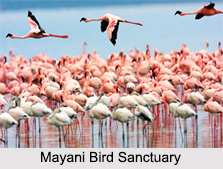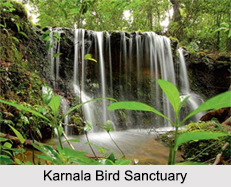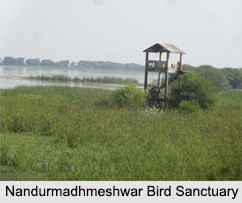 The state of Maharashtra is situated in the western part of India. The geographical terrain of this state is characterized by rivers, palm-fringed beaches, islands and mountains. The natural beauty of Maharashtra, along with world heritage sites, temples, cosmopolitan cities, etc draw tourists to this state. Maharashtra also has bird sanctuaries, which provide protection to the flora and fauna in the state.
The state of Maharashtra is situated in the western part of India. The geographical terrain of this state is characterized by rivers, palm-fringed beaches, islands and mountains. The natural beauty of Maharashtra, along with world heritage sites, temples, cosmopolitan cities, etc draw tourists to this state. Maharashtra also has bird sanctuaries, which provide protection to the flora and fauna in the state.
Mayani Bird Sanctuary
Mayani Bird Sanctuary is located in the Satara district, near Vaduj. This sanctuary is created on an old dam probably built by the British. The water of the dam is not only useful for irrigation and farming, but also for birds. 400 migratory birds were recorded in 2005 from the area. Some of the birds of the sanctuary are flamingos, stork, kingfisher, black ibis, painted stork and common spoonbill. Hydrophytic species like otolia sps growing in the shallow water serves as the main source of food for aquatic birds. Small fishes, crabs and water insects are the other alternatives for consumption.
Karnala Bird Sanctuary
Karnala Bird Sanctuary is located in Panvel Taluka of Raigad District, outside Mumbai, near Matheran and Karjat. This sanctuary occupies an area of about 446 square kilometers. Resident species, winter migrant species, breeding migrants, passage migrant species and vagrant species are known to receive protection in Karnala. Those endemic to the Western Ghats like grey-fronted green-pigeon, Nilgiri wood pigeon and Malabar grey hornbill, rare birds like Malabar trogon and butterflies are no exception in this regard.
Nandurmadhmeshwar Bird Sanctuary
Nandurmadhmeshwar Bird Sanctuary is housed in the Niphad Tehsil of Nashik district, along with the Nandurmadhmeshwar Dam at the meeting points of Godavari River and Kadwa River. This sanctuary became a reality due to the efforts by the Bombay Natural History Society, World Wildlife Fund and the Forest Department of the Government of Maharashtra. This sanctuary occupies an area of about 10000 hectares, with the core area consisting of 1765 hectares. The protected area houses birds like egrets, herons, buzzards, grey hornbill and peafowl. Some of those visiting the sanctuary are white stork, glossy ibis, flamingo and pintail.
This sanctuary became a reality due to the efforts by the Bombay Natural History Society, World Wildlife Fund and the Forest Department of the Government of Maharashtra. This sanctuary occupies an area of about 10000 hectares, with the core area consisting of 1765 hectares. The protected area houses birds like egrets, herons, buzzards, grey hornbill and peafowl. Some of those visiting the sanctuary are white stork, glossy ibis, flamingo and pintail.
Great Indian Bustard Sanctuary
Great Indian Bustard Sanctuary is located in Solapur. It was established in 1979 and is spread over an area of about 122,200 hectares (472 sq mi). This sanctuary comes under a bio-geographic zone called the Deccan Peninsula. According to conservationists and bird watchers, creation of a sanctuary has hardly acted as a solution for preserving the Great Indian Bustard in Maharashtra. According to a renowned ornithologist, Great Indian Bustard is virtually extinct from Maharashtra.











